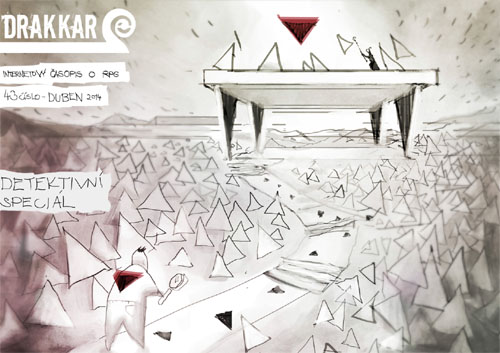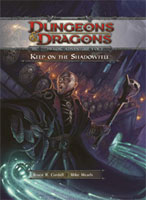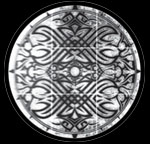 I talked a bit about Technoir‘s resolution mechanics over here and I’ll probably have more to say about them once I’ve had a chance to experience the game as a player. In the meantime, however, I’ve run the game three times for three different groups in the last two weeks. That’s a lot of gaming, and it’s being driven by my excitement in engaging with the other half of Technoir‘s system: Plot mapping.
I talked a bit about Technoir‘s resolution mechanics over here and I’ll probably have more to say about them once I’ve had a chance to experience the game as a player. In the meantime, however, I’ve run the game three times for three different groups in the last two weeks. That’s a lot of gaming, and it’s being driven by my excitement in engaging with the other half of Technoir‘s system: Plot mapping.
(It is also, coincidentally, reminding me why I love open tables. I now have three groups each featuring a dangling story that I need to schedule follow-up sessions for. I’m loving the game. I am not enjoying the schedule wrangling.)
Scenario prep in Technoir takes the form of transmissions (three of which are included in the rulebook, with additional transmissions being made available on the game’s website). Each transmission consists of six connections, six events, six factions, six locations, six objects, and six threats.
Connections are major NPCs. During character creation, each player will select three of these connections as personal contacts (friends, comrades, love interests, professional associates, etc.). Events, locations, and objects are pretty much exactly what they sound like. Factions are powerful groups with ideologies to push and goals to pursue. Threats are NPCs or groups of NPCs who can be used by factions or connections to come after the PCs.
Each transmission comes with a 6×6 master grid, allowing you to randomly generate one of these nodes by rolling 2d6. And you start your plot map by generating three of these nodes and connecting them to each other.
For example, taking the Kilimanjaro Ring transmission from the rulebook, I randomly generate:
(1) Tanzanian Reclamation (Faction): One of the more well-known anti-Beanstalk, anti-European terrorist groups.
(2) Temptation (Connection): A dancer and escort at Shadows Under Camelot.
(3) Union Protest (Event): An inflamed uprising of summit workers armed with construction equipment.
And draw them on the center of a blank sheet like this:
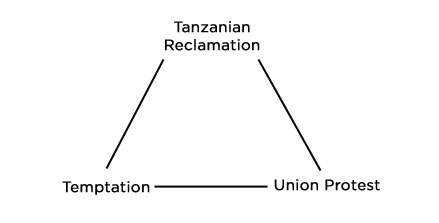
Looking at this for a minute or so, I figure out what the connection between these three elements are: Temptation is sleeping with the vice chairman of the newly-formed Union of Summit Workers who are laboring on the orbital beanstalk sprouting from Mt. Kilimanjaro. He’s married and the Tanzanian Reclamation is using the relationship to blackmail him. He gives them access to the site of the union protest and Tanzanian Reclamation uses that access to bomb the protest. Their goal is to further destabilize the relationship between the government and the laborers working on the beanstalk.
This leaves us with a lot of unanswered questions, but that’s more than okay. I will, however, jot down a couple quick notes:
Is Temptation working with Tanzanian Reclamation willingly or unwillingly?
Next step is to gain access to the actual build site and bomb that.
This is referred to as the mission seed and it gives you the core of your first scenario.
Over the course of play there are a number of simple mechanisms which will add additional nodes to your plot map. As you do so, the new nodes will “tell” you more and more about what’s going on. (For example, let’s say that I later generate the Construction Zone Identcard. Given the seed I’ve put together, it doesn’t take much effort to connect that card to the Tanzanian Reclamation and conclude that it’s the card they’ll use to access the construction zone for their next bombing. The more interesting question is where, exactly, that card came from. And the plot map will probably get around to telling me that, too.)
…AND THE THREE CLUE RULE
Once play begins, the core method of adding new nodes to the plot map is pretty simple: “A protagonist can lean on her connections for information. She may be attempting to find some opportunity she can take advantage of or get further details of a plot she’s started to learn about. When this happens, have her player roll a die and consult that connection’s table. Add the resulting node to your plot map and draw a line from it to another node already on your map. Once you have done this, take on the persona of the connection as he clues the protagonist in to the existence of this new node and how it relates to the node you linked it to.”
This mechanic, obviously, models the noir genre trope of a detective hitting up his contacts until something in the case shakes loose.
And, ultimately, all of this works in play because of the Three Clue Rule.
What made it striking for me, I think, is the numerical similarity: Three clues. Three nodes in the mission seed. Three connections per PC.
I’m not saying that Jeremy Keller was actually familiar with the Three Clue Rule or deliberately trying to emulate it when he designed Technoir. But the Three Clue Rule arose from actual play experience, and it works because of the same fundamental principles of redundancy which are being applied here.
Take a moment to really look at how the plot map functions: Think of each node in the initial mission seed as a conclusion that the PCs need to reach. (For example, in our sample mission seed, they need to figure out that Temptation is involved.) Unlike traditional scenario design, however, the GM doesn’t need to worry about seeding his first scene with three clues for the PCs to pursue. Instead, each of the PCs comes prepackaged with three clues (there’s the rule) that they can follow up on in the form of their connections.
Even if you only have one PC, the clues manage themselves: They hit up one of their connections (exhausting a clue), but the connection points them in the direction of a node which is now connected to the mission seed. That connection is functionally identical to a clue itself, which means that you’ve restocked the PC’s clue supply. And as soon as they hit a node connected to two or more nodes (like those in the mission seed), they’ll have a surplus of clues.
In actual practice, you’ll have multiple PCs and a huge “clue buffer” of connections to fall back on as the plot map grows in complexity and additional mysteries are added to compound the original enigma. So even if the GM doesn’t liberally strew around additional clues (although why wouldn’t they?), engage in permissive clue-finding (which the game encourages), or include proactive clues (which is exactly what threats are designed for), the game will still default into a success state.
FOOD FOR THOUGHT
I’ve been using node-based scenario design for years now (with “node” in this context having a slightly different meaning). In practice, node-based scenario design is a flexible framework for leveraging the basic principles of the Three Clue Rule into a simple-to-prep structure which nevertheless results in complex, non-linear play.
On a personal level, what I find deeply intriguing about Technoir‘s plot mapping is that it is a radically different structure for achieving the same thing. And because it’s a different structure, of course, it has unique strengths and weaknesses — allowing you to accomplish things that node-based scenario design doesn’t (and vice versa).
(For example, as I mentioned, the Technoir system is very effective at allowing players to proactively hit up their contacts like noir detectives. Accomplishing that using node-based scenario design would either require a lot of redundant prep for each contact or a narrow constriction of player choice.)
And unlike the adjective-based resolution mechanics, it should be noted that it is absolutely trivial to take the plot mapping mechanics in Technoir and apply them to another system. Even if you have no interest in the game’s setting or its innovative resolution mechanics, I’d still recommend picking up a copy of the rulebook just to get access to the full system for plot mapping (which I’m only describing in general terms here).
The interesting question now is simple: What other structures can we use to leverage the redundant principles of the Three Clue Rule? Of particular interest would be those structures which maintain simple, straight-forward prep which can still result in complex emergent play.
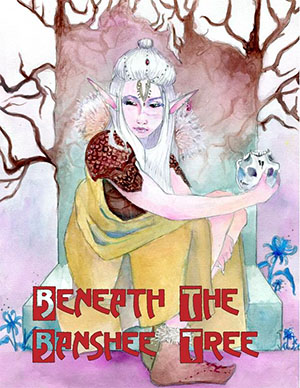 Brendan Davis sent me review copies of the Sertorius roleplaying game and the Beneath the Banshee Tree scenario for the game because my Three Clue Rule was name-dropped and used in the latter.
Brendan Davis sent me review copies of the Sertorius roleplaying game and the Beneath the Banshee Tree scenario for the game because my Three Clue Rule was name-dropped and used in the latter.
